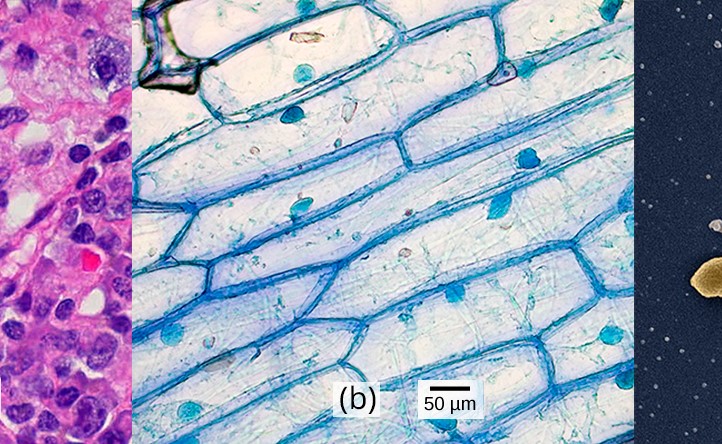Module 4: Cell Structure
Section outline
-
 This module explores the cellular level of the biological hierarchy of organization, which builds on what you have learned about how atoms interact to form molecules, and the important biological macromolecules that compose living systems. We will learn about the technology that is used to study cells, the basic types of cells and their defining features and the structure and functions of subcellular structures, or organelles. This module 's chapter concludes with the ways cells are linked together to form the next level of organization: collections of cells called tissues.
This module explores the cellular level of the biological hierarchy of organization, which builds on what you have learned about how atoms interact to form molecules, and the important biological macromolecules that compose living systems. We will learn about the technology that is used to study cells, the basic types of cells and their defining features and the structure and functions of subcellular structures, or organelles. This module 's chapter concludes with the ways cells are linked together to form the next level of organization: collections of cells called tissues. The cell is the fundamental and most basic unit of life; it is the simplest level of organization that is capable of maintaining the processes necessary for maintaining life. Whether a biologist is studying the anatomy and physiology of unicellular or multicellular organisms, or the chemical process that occur at the cellular level, or more complex concepts, such as ecology and evolution, knowledge of the cell is an essential component.
Image from Biology 2e from OpenStax, licensed under Creative Commons Attribution License v4.0 with the image credit: modification of work by Ed Uthman, MD; modification of work by Umberto Salvagnin; modification of work by Anthony D'Onofrio, William H. Fowle, Eric J. Stewart, and Kim Lewis of the Lewis Lab at Northeastern University; scale-bar data from Matt Russell.
Upon completion of this module, you will be able to:- Summarize cell theory (Course Outcome #2)
- Compare and contrast prokaryotic and eukaryotic cells, and animal and plant cells, and name examples of each (Course Outcome #2)
- Summarize the structure and functions of the major cell structures and organelles, including the endomembrane system, the cytoskeleton and external structures (Course Outcome #2)
- Explain how cells can function with each other through the extracellular matrix and cell connections (Course Outcome #2)
- Read the Module 4 Introduction
- Read and view the materials in the Module 4 Pressbooks book, embedded below by section for the chapter titled Cell Structure.
- Complete the assignment and discussion forum post and response
This module's lab activity is included as well, to occur in the lab class. Slides are available to accompany the class lecture.
Module Pressbooks Resources and Activities
You will find the following resources and activities in this module at the Pressbooks website. Click on the links below to access or complete each item.
- Summarize cell theory (Course Outcome #2)
Background Colour
Font Face
Font Kerning
Font Size
Image Visibility
Letter Spacing
Line Height
Link Highlight
Text Colour
